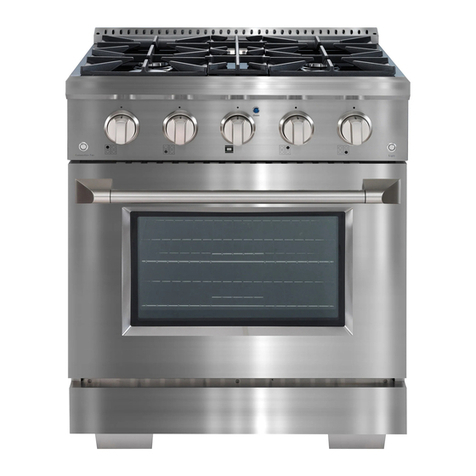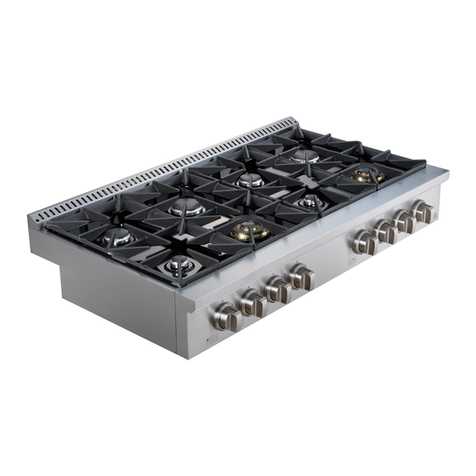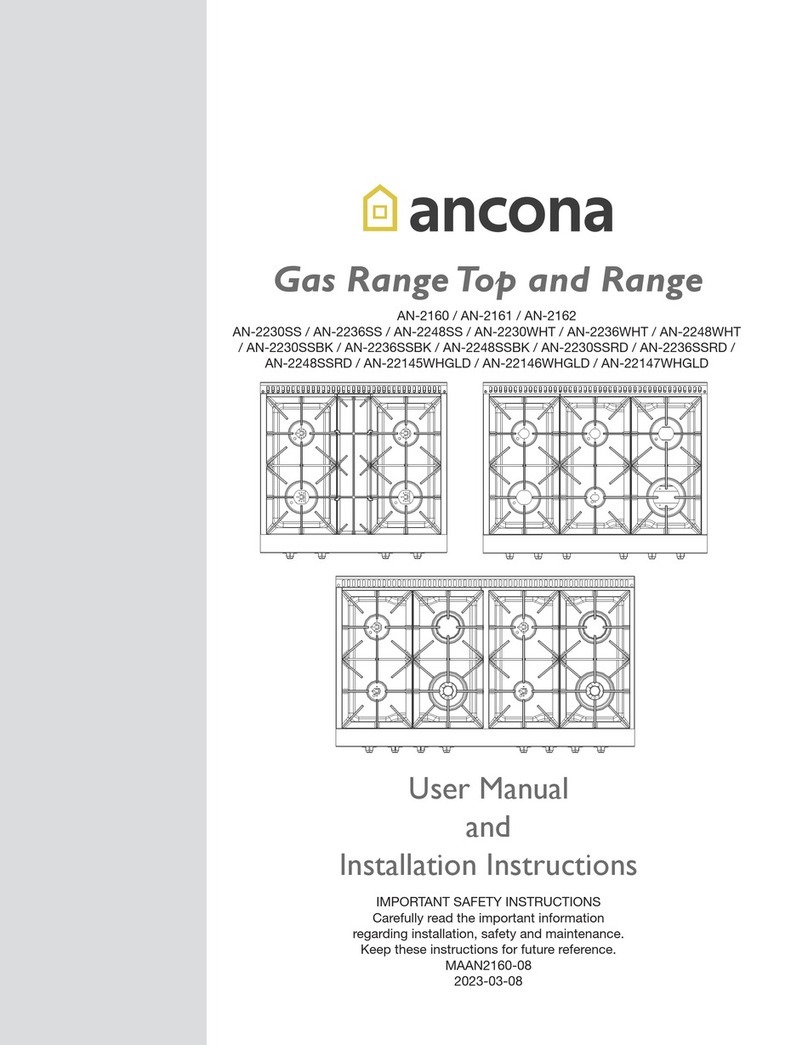
— 5 —
Important Safety Information
WARNINGS
• Donotstoreorusegasolineorotherammablevapors
and liquids in the vicinity of this or any other appliance.
• Gasleakscannotalwaysbedetectedbysmell.
• Gassuppliersrecommendthatyouuseagasdetector
approved by UL or CSA. For more information, contact
your gas supplier.
• Ifagasleakisdetected,followthe“Whattodoifyou
smell gas” instructions on the previous page.
• Installationandservicemustbeperformedbyaqualied
installer, servicer or the gas supplier. Ask your dealer
to recommend a qualied technician and an authorized
repair service. Know how to shut off gas supply at
the meter and disconnect the electrical power to the
appliance at the circuit breaker or fuse box in case of an
emergency. Have the installer show you the location of
the range gas shut-off valve and how to shut it off
if necessary.
• Donotrepairorreplaceanypartoftheapplianceunless
specically recommended in this manual. All other
servicing should be done only by a qualied technician.
This may reduce the risk of personal injury and damage
to the appliance.
•Proper Installation: The range, when installed, must
be electrically grounded in accordance with local codes
or, in the absence of local codes, with the National
ElectricalCode,ANSI/NFPA70.InCanada,therange
must be electrically grounded in accordance with
Canadian Electrical Code. Be sure the range is properly
installed and grounded by a qualied technician.
• Disconnectpowerbeforeservicing.
• Nevermodifyoraltertheconstructionoftheappliance
by removing panels, wire covers or any other part of
the product.
• Injuriesmayresultfromthemisuseofappliancedoors
or drawers such as stepping, leaning, or sitting on the
doors or drawers.
• Overheadrangehoods,whichoperatebyblowinga
downwardairowontoarange,shallnotbeusedin
conjunction with gas ranges other than when the hood
and range have been designed, tested and listed by an
independent test laboratory for use in combination with
each other.
• Ifrangeislocatednearawindow,NEVERhanglong
curtains or paper blinds on that window. They could
blow over the surface burners and ignite, causing a
re hazard.
• Ensurethattheroomiswellventilatedbykeepingtheair
intakes open and in good working order or by installing
an extractor hood with discharge pipe. If the appliance
is used intensively for a long time the effectiveness of
the ventilation will have to be increased, for example
by opening a window or increasing the power of any
electric extractor fan.
• Flammablematerialsshouldnotbestoredonthe
appliance or near surface units. This includes paper,
plastic and cloth items, such as cookbooks, plastic
wareandtowels,aswellasammableliquids.Donot
store explosives, such as aerosol cans, on or near the
appliance. Flammable materials may explode and result
in re or property damage.
•Maintenance: Keep range area clear and free from
combustiblematerials,gasoline,andotherammable
vapors and liquids.
•Storage in or on the Range: Flammable materials
should not be stored in an oven or near surface units.
IN THE STATE OF MASSACHUSETTS, THE FOLLOWING
INSTALLATION INSTRUCTIONS APPLY:
• Installationsandrepairsmustbeperformedbya
qualied or licensed contractor, plumber, or gas-tter
qualied or licensed by the State of Massachusetts.
• Ifusingaballvalve,itshallbeaT-handletype.
• Aexiblegasconnector,whenused,mustnotexceed
three feet.
STATE OF CALIFORNIA PROPOSITION 65 WARNINGS:
• TheCaliforniaSafeDrinkingWaterandToxic
Enforcement Act requires the Governor of California to
publish a list of substances known to the state to cause
birth defects or other reproductive harm and requires
businesses to warn customers of potential exposure to
such substances.
• Gasappliancescancauseminorexposuretothree
of these substances, namely, carbon monoxide,
formaldehyde and soot, caused primarily by the
incomplete combustion of natural gas or LP fuels.
Properly adjusted burners, indicated by a bluish rather
thanyellowame,willminimizeincompletecombustion.
Exposure to these substances can be minimized by
venting with an open window or by using a ventilation
fan or hood.































